Table of Contents
● Introduction
● Understanding the main types of smart waste bins
● Market trends and forecast for 2025
● Key considerations when selecting smart waste bins
● Leading models and their standout features
● Conclusion
Introduction
Smart waste bins have transformed how waste is managed by incorporating advanced technology to enhance hygiene, convenience, and efficiency. Equipped with features like motion sensors, automatic sealing, and odor control, these bins minimize direct contact with waste, reducing contamination risks. Many models offer smart connectivity, enabling real-time monitoring and automated bag replacement. Whether in busy environments or homes, these products provide seamless waste disposal solutions, making them indispensable for modern, efficient waste management. With increasing demand for sustainability and hygiene, smart waste bins are a practical investment for any setting.
Understanding the main types of smart waste bins
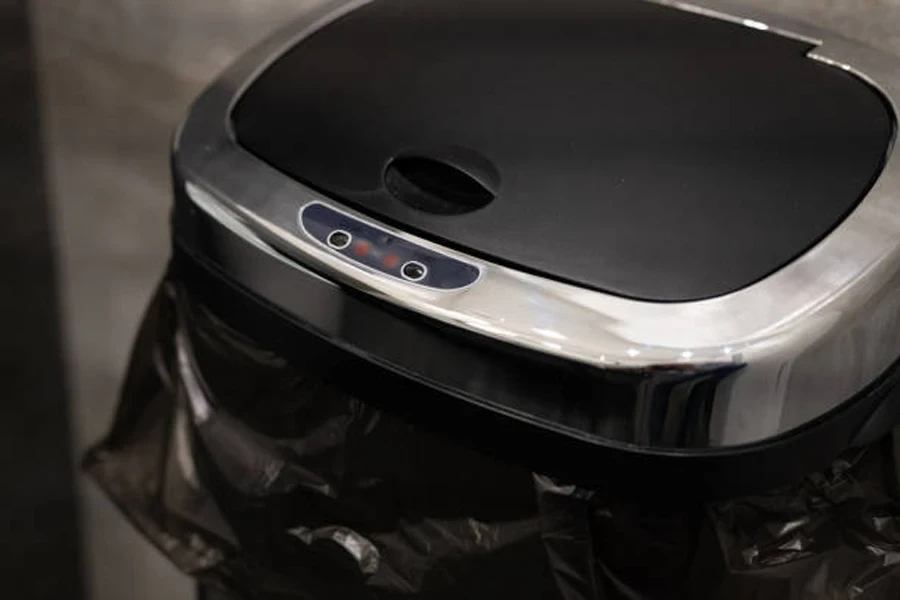
Sensor-based waste bins
Sensor-based bins use motion detection technology to provide a touchless experience, improving hygiene by reducing the need for physical interaction. Equipped with proximity sensors, these bins automatically open when they detect motion and close once waste is deposited, limiting exposure to germs. Some advanced models also feature fill-level sensors that notify waste management systems when the bin is nearing capacity, optimizing collection routes and reducing operational costs. This innovation helps businesses minimize labor requirements and avoid overflowing bins.
Odor-control and air filtration systems
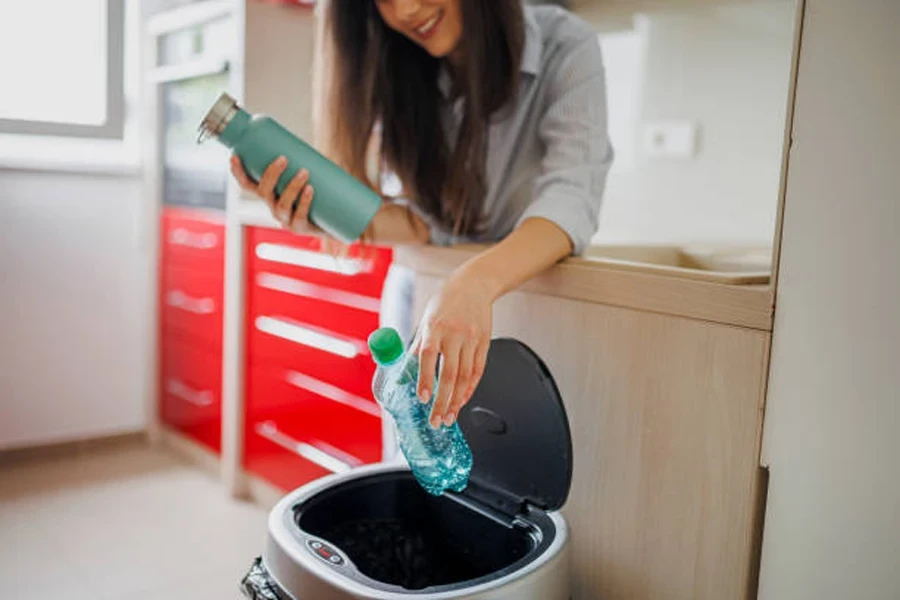
Odor control is a critical feature in smart waste bins, especially for environments where hygiene is a top priority, such as medical facilities or food service areas. Smart bins with odor-control mechanisms use activated carbon filters or air filtration technologies to neutralize unpleasant smells. This enhances air quality in the surrounding environment, making these bins suitable for indoor use in spaces with high waste production. By ensuring that odors are contained, these bins contribute to a more pleasant and sanitary environment.
Hybrid options
Hybrid smart waste bins combine advanced features—motion sensors, self-sealing mechanisms, and odor control—into one unit. These models are designed to offer comprehensive solutions for managing waste in busy environments. Hybrid bins maximize operational efficiency, reduce labor costs, and improve sanitation by integrating several technologies. Such bins are particularly well-suited for commercial and industrial applications where large volumes of waste must be managed effectively. The hybrid nature allows businesses to streamline waste collection while ensuring a more sustainable and hygienic waste management system.
Market trends and forecast for 2025
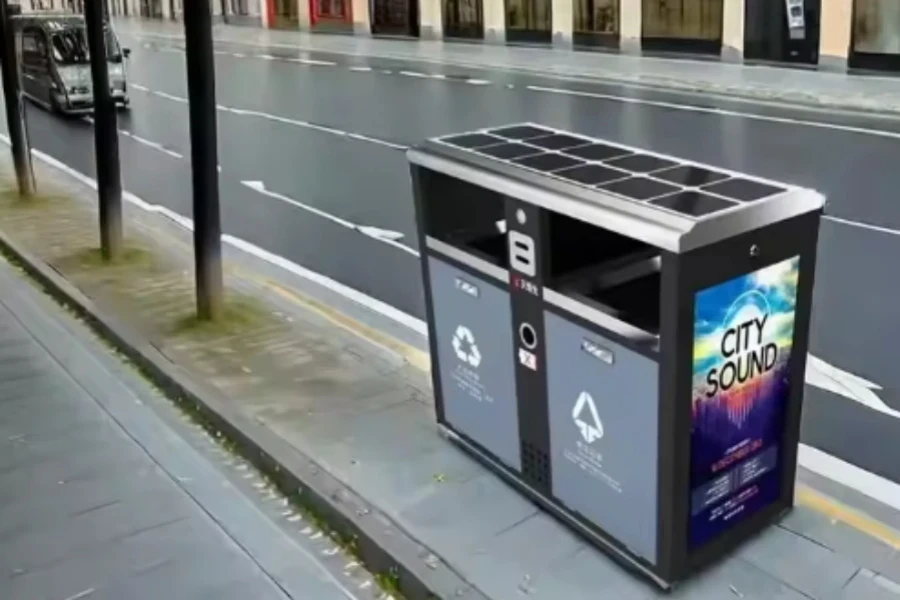
The smart waste bin market is set to experience significant growth, driven by the increasing integration of IoT technology and the growing awareness of sustainable waste management. By 2025, the global market for smart waste bins is expected to reach an estimated value of $5.42 billion, with a compound annual growth rate (CAGR) of 64.1%. As FutureIOT shows, this surge reflects a broader adoption of advanced waste collection systems, primarily in urban centers aiming to improve sanitation and reduce environmental impacts.
Adoption rates and smart technology integration
The adoption of smart waste bins is rising sharply, fueled by the rapid deployment of IoT-enabled devices and advanced sensors. These technologies enable real-time monitoring, allowing for optimized waste collection routes, which helps reduce operational costs and fuel consumption. As Mordor Intelligence and Grand View Research shows, cities across North America, Europe, and Asia-Pacific are at the forefront of this integration, employing AI-based systems to track waste levels and enhance recycling efforts. This smart technology is helping to minimize waste overflow, improve sanitation, and provide valuable data for further urban waste management optimization.
Key considerations when selecting smart waste bins
Capacity and size requirements
One of the first considerations is the bin’s capacity. The appropriate size depends on the volume of waste typically generated in the environment where the bins will be deployed. For high-traffic areas, such as public parks or commercial complexes, larger bins or those with built-in compactors are recommended to handle greater waste volume and reduce the frequency of emptying. TheMayor.EU and TASMU SMART QATAR show that smart bins with solar-powered compacting features can increase waste capacity by up to 700%, optimizing collection and lowering operational costs.
Energy efficiency: battery life vs. wired options
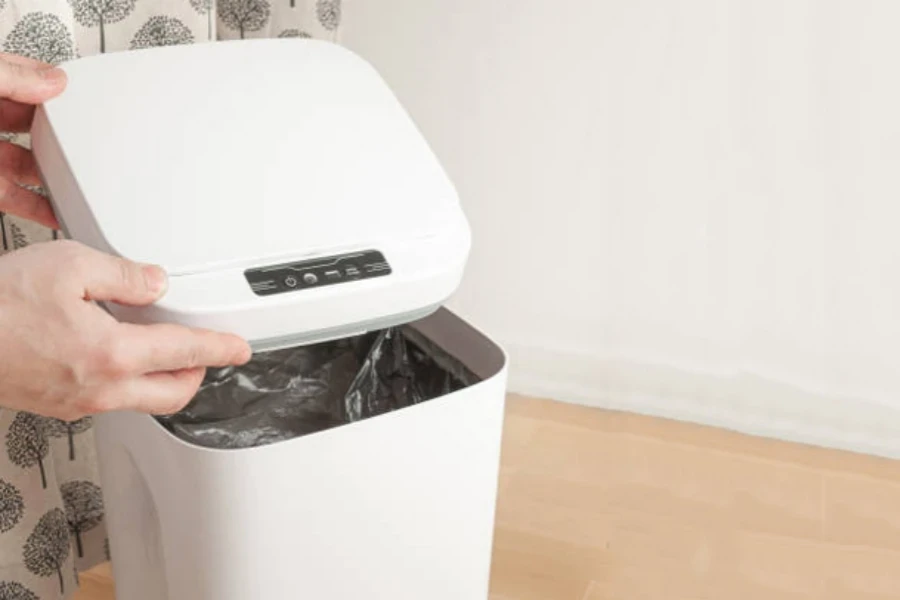
Energy efficiency is crucial when choosing between battery-powered and wired smart bins. Battery-powered bins offer flexibility in placement but require regular maintenance to ensure continuous operation, especially in outdoor or remote locations. Modern smart bins use rechargeable batteries or solar energy to extend battery life and minimize maintenance. On the other hand, wired bins provide constant power but are limited by their proximity to electrical outlets, making them better suited for indoor or semi-permanent installations. Depending on the specific use case, balancing energy needs with environmental and placement considerations is key.
Design and integration with smart home systems
For business environments focused on integrating multiple systems, selecting bins that can seamlessly connect to existing smart networks is important. Smart waste bins with IoT sensors can provide real-time data on fill levels, waste types, and maintenance needs. These sensors can also be integrated with broader smart city or smart home systems, allowing for automated waste collection scheduling and minimizing the need for human intervention. Aesthetic design is also a factor, as bins should match the interior or exterior spaces while maintaining functionality.
Durability and material quality for various environments
Durability is another critical factor for outdoor installations exposed to harsh weather conditions. Smart bins made from rust-resistant materials like stainless steel or high-grade plastic can withstand the elements, reducing the need for frequent replacement. Reinforced bins with tamper-resistant features should be prioritized for environments with a high risk of vandalism or wear and tear. Ensuring that the bins are suited to their environment extends their operational lifespan and minimizes long-term costs.
Leading models and their standout features
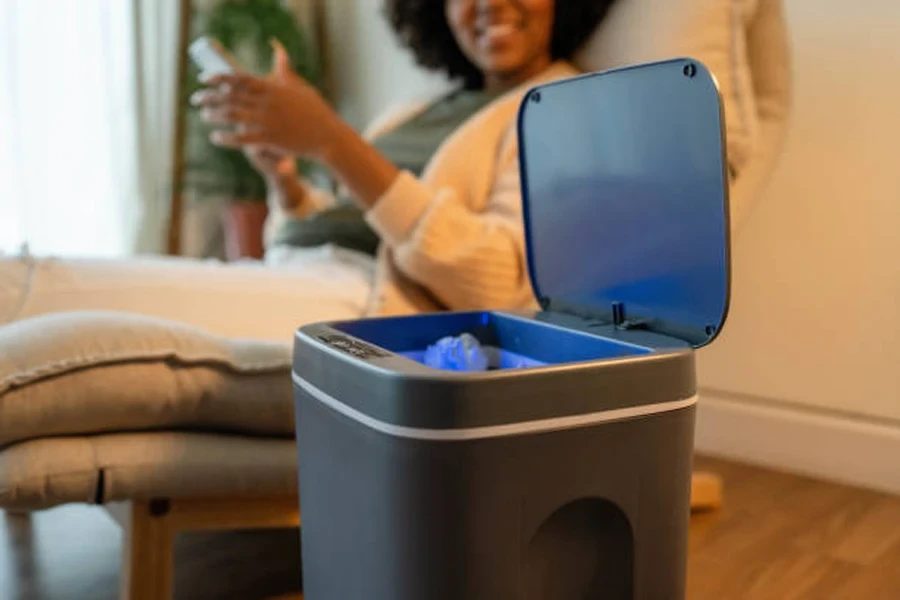
Motion sensor and touchless operation
One of the most notable features of smart waste bins is motion sensors for touchless operation. These bins detect the movement of a hand or object near the lid, allowing it to open automatically without needing physical contact. This feature significantly reduces the spread of germs, making these bins ideal for environments where hygiene is critical, such as hospitals and commercial kitchens. Additionally, the sensor technology in newer models is designed for increased precision, ensuring that the lid remains open only when necessary and closes smoothly afterward to prevent unnecessary battery drain.
Odor management and innovative sealing technologies
Odor management is a key concern in environments where waste accumulates quickly. Many advanced smart bins now include built-in odor control systems that utilize carbon filters or other deodorizing technologies to neutralize unpleasant smells. These features ensure that the surrounding environment remains fresh even as waste sits in the bin. For example, certain models come equipped with specialized filters that absorb odor-causing bacteria, making them suitable for indoor and outdoor applications.
Smart connectivity and advanced monitoring systems
Smart connectivity is transforming how waste management is handled. Many leading models have IoT capabilities, allowing them to communicate with central systems to provide real-time data on waste levels and bin status. These bins can notify maintenance teams when nearing capacity or require cleaning, optimizing waste collection routes and reducing operational costs. Additionally, these systems can generate reports and insights, helping organizations improve their sustainability efforts and make data-driven decisions.
Conclusion
Smart waste bins offer significant advancements in waste management by integrating motion sensors, self-sealing features, and odor control systems. When selecting these products, businesses should consider capacity, energy efficiency, and connectivity factors. The operational efficiency and sustainability benefits are clear with models featuring real-time data monitoring and automatic bag replacement. The top models poised for success in 2025 will blend innovative technology with durability and ease of use, allowing organizations to reduce costs and improve waste collection processes.





 বাংলা
বাংলা Nederlands
Nederlands English
English Français
Français Deutsch
Deutsch हिन्दी
हिन्दी Bahasa Indonesia
Bahasa Indonesia Italiano
Italiano 日本語
日本語 한국어
한국어 Bahasa Melayu
Bahasa Melayu മലയാളം
മലയാളം پښتو
پښتو فارسی
فارسی Polski
Polski Português
Português Русский
Русский Español
Español Kiswahili
Kiswahili ไทย
ไทย Türkçe
Türkçe اردو
اردو Tiếng Việt
Tiếng Việt isiXhosa
isiXhosa Zulu
Zulu